"Santa Claus" in Other Cultures

Santa Claus is the jolly Christmas figure who brings gifts to kids in much of the western world. But he is not the only gift giving legend out there. Many cultures have a version of Santa who brings presents to the kids on Christmas or on a related holiday like Epiphany or Saint Nicolas’ Day. Some of these legends are related to Saint Nick, like Santa Claus, and some of them are based on separate mythologies.
Russia
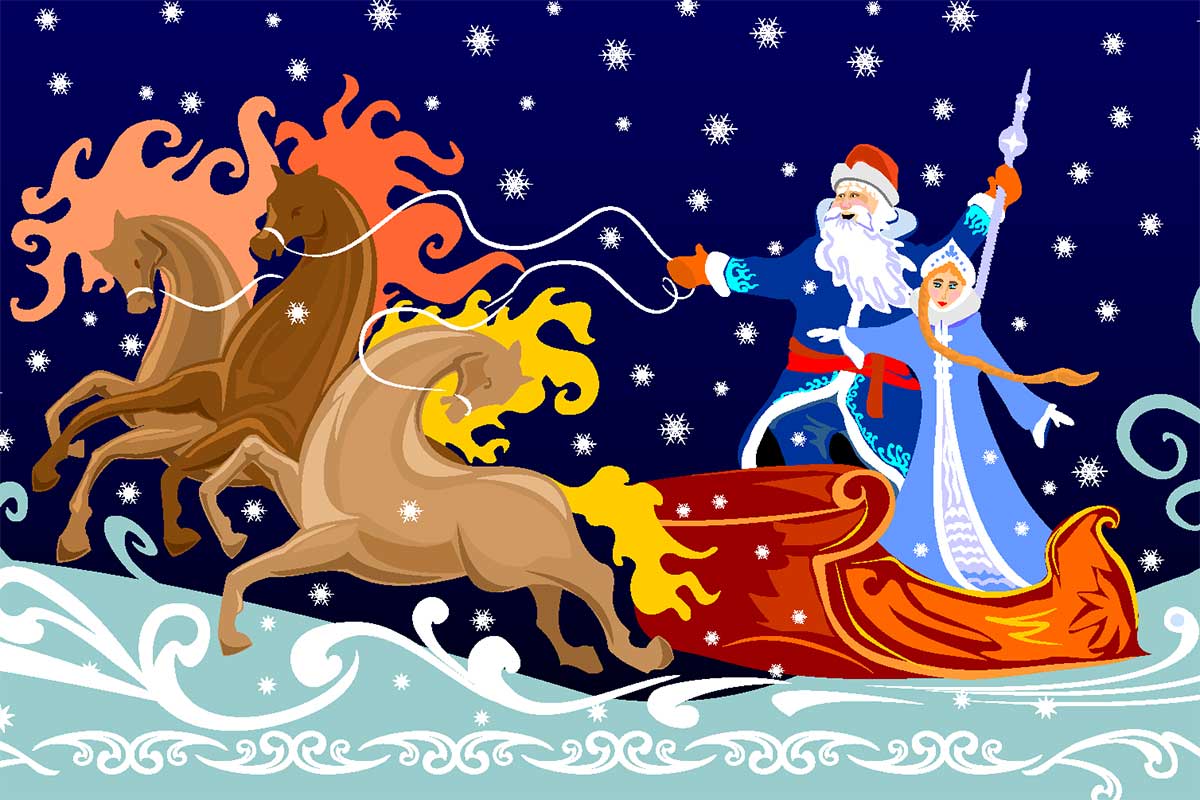
Russia has a complicated history with religious holidays like Christmas because of its nearly 100 years under a communist regime that discouraged any religious traditions. Before the revolution of 1917, children received gifts on Epiphany Eve (or Twelfth Night) from a grandmotherly figure called Baboushka (grandmother in Russian). The legend stated that Baboushka lived alone in the woods for many years when she was visited by the three wise men on their way to bring gifts to the newborn Jesus. They asked her to join them, but she refused. Later, she regretted her decision, so she gathered some things she had around the house and set out to search for the new little king. She never found him, but she still sets out every Epiphany Eve to search for him in every house, leaving some of the gifts for kids along the way.
After the revolution, the government encouraged belief in a new figure called Grandfather Frost to bring gifts to children. Grandfather Frost is based on an old personification of frost. Originally, villagers would leave food out for him to satisfy his hunger so he would leave their crops alone. Later his image shifted to a more grandfatherly figure who brought gifts to children on Christmas. Because Grandfather Frost was unrelated to the religious story of Christmas, the government chose him as the gift giver to promote belief of. They shifted the day of his gift bringing to New Years Eve because the celebration of Christmas was not encouraged.
Another winter legend the government approved of was the Snow Maiden. She was the daughter of an old, peasant couple who had always wanted a child but could never have one. They built a little girl out of snow and wished for her to come to life. Their wish came true and the couple was blessed with a daughter of snow. As Spring approached, the Snow Maiden could not stay, and melted away, but to her parents great delight, she returned the next winter and each one after that. Originally the Snow Maiden was not connected to Christmas, but eventually she became known as Grandfather Frost’s grandchild, and she now travels with him on New Years Eve each year.
Today Russians are free to celebrate whatever holidays they want and believe in whatever figures they want. Most still believe in Grandfather Frost and the Snow Maiden, but some have once again started to believe in Baboushka while still others have started to believe in Santa Claus instead.
Italy
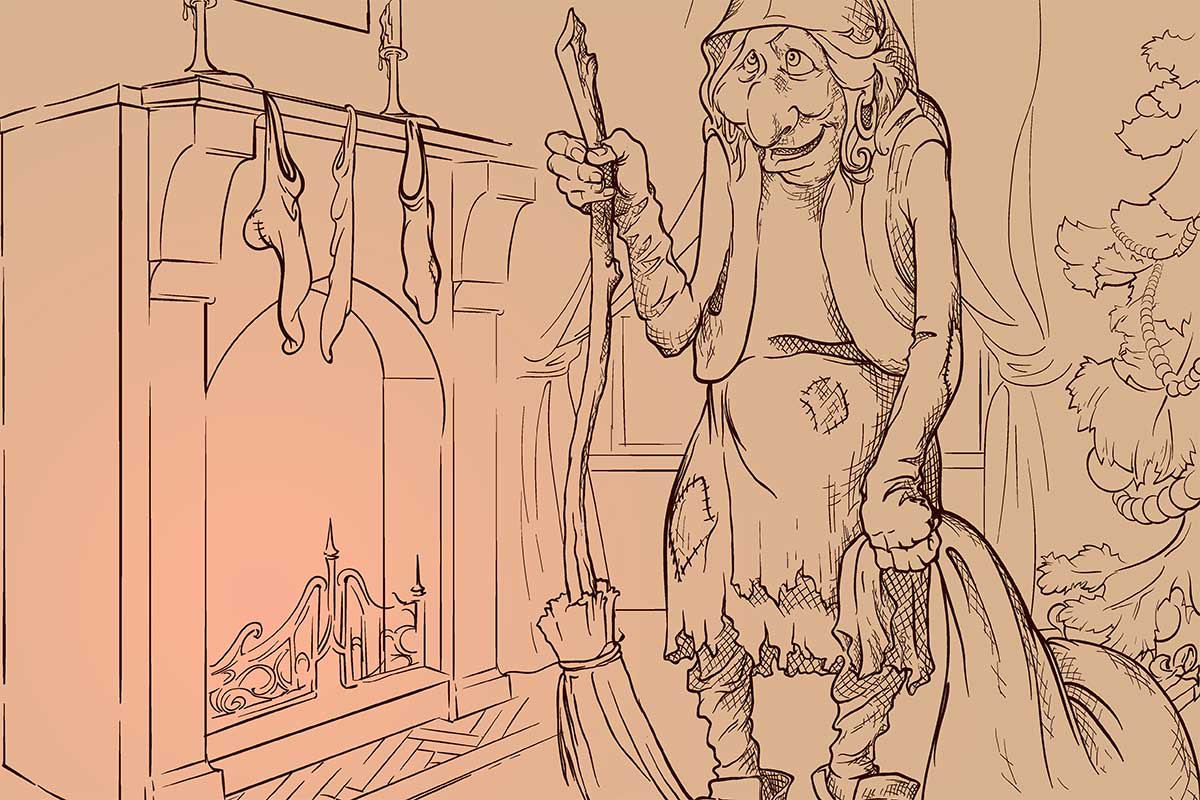
The gift giving legend of Italy is called La Befana, and is related to Russia’s Baboushka and other old Christmas spirits. Like Baboushka, La Befana was an old woman who was visited by the three wise men but refused to go with them. La Befana is not seen as simply an old woman, though, she is a witch, and she is often also referred to as La Strega, which means “the witch”. She flies on her broomstick on Epiphany Eve searching for the Christ child in every household by flying into the chimney. Children hang stockings or suits of clothes by the fireplace and she leave presents in the stockings or in the pockets of the clothes for the good children and ashes, coal, or a birch rod for the bad children.
Germany, Austria, and Switzerland
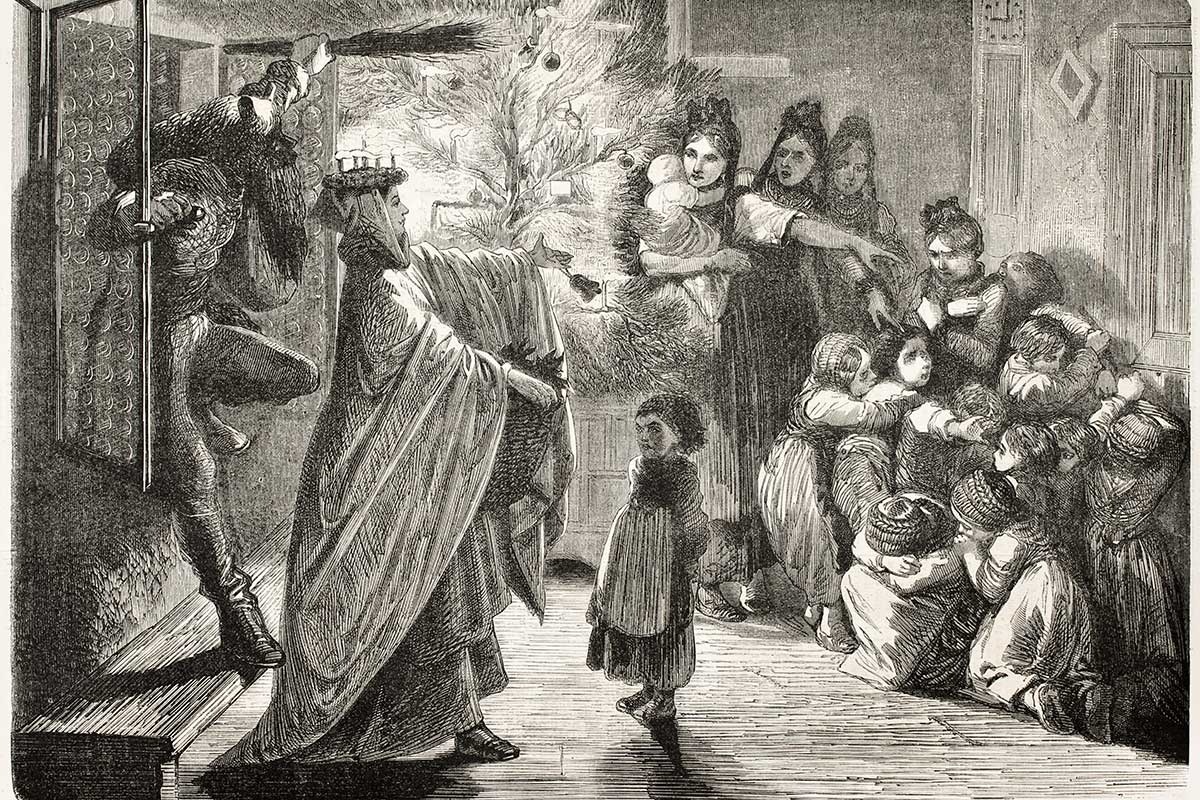
In the 17th century, Protestant reformers in Germany grew weary of the idea of Saint Nicholas, a Catholic saint, bringing gifts to their children. They introduced the idea that the Christ Child himself, or Christkindel, brought presents on Christmas, to teach their children that all blessings come directly from God. Over time the perception of the Christ Child changed and began to be depicted by some as a young female angel. Sometimes the Christ Child was accompanied by a threatening spirit called Hans Trapp who punished bad children until the Christ Child intervened. When German immigrants brought this tradition to America, where the idea of Santa Claus was already taking hold, the word Christkindel was changed to Kriss Kringle, which became another name for Santa.
Netherlands
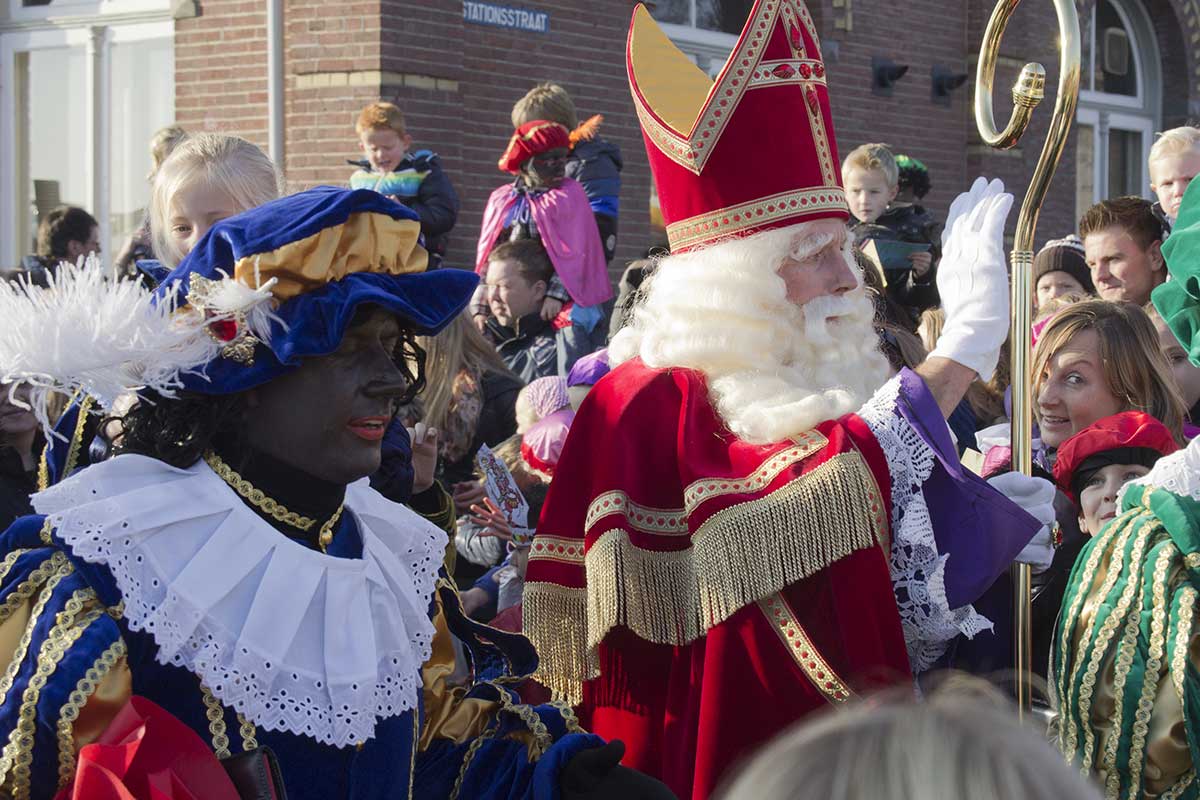
In the Netherlands, Saint Nicholas brings presents to the children on Saint Nicholas day, but he is depicted a little differently than Santa Claus in America. Children believe that Saint Nicholas travels from Spain to Holland on a ship filled with presents. He is accompanied by a helper called Black Peter, or Zwarte Piet. Black Peter was once a common nickname for the devil. People believed that Saint Nicholas kidnapped the devil every Saint Nicholas Day to help him deliver gifts to children. Eventually Black Peter began to be depicted as a dark skinned man dressed in 16th century Spanish attire. The devil was often thought of as being black-skinned, so Black Peter took on that trait. He’s probably depicted as a 16th century Spaniard because the Dutch were miserable under Spanish rule in the 16th century. Black Peter is responsible for punishing the children who have misbehaved throughout the year, usually using a birch rod. The most misbehaved children were thrown in Black Peter’s bag and dragged back to Spain with him. Each year, the arrival of Saint Nicholas and Black Peter is reenacted in Amsterdam.
Sweden, Denmark, Norway, and Finland
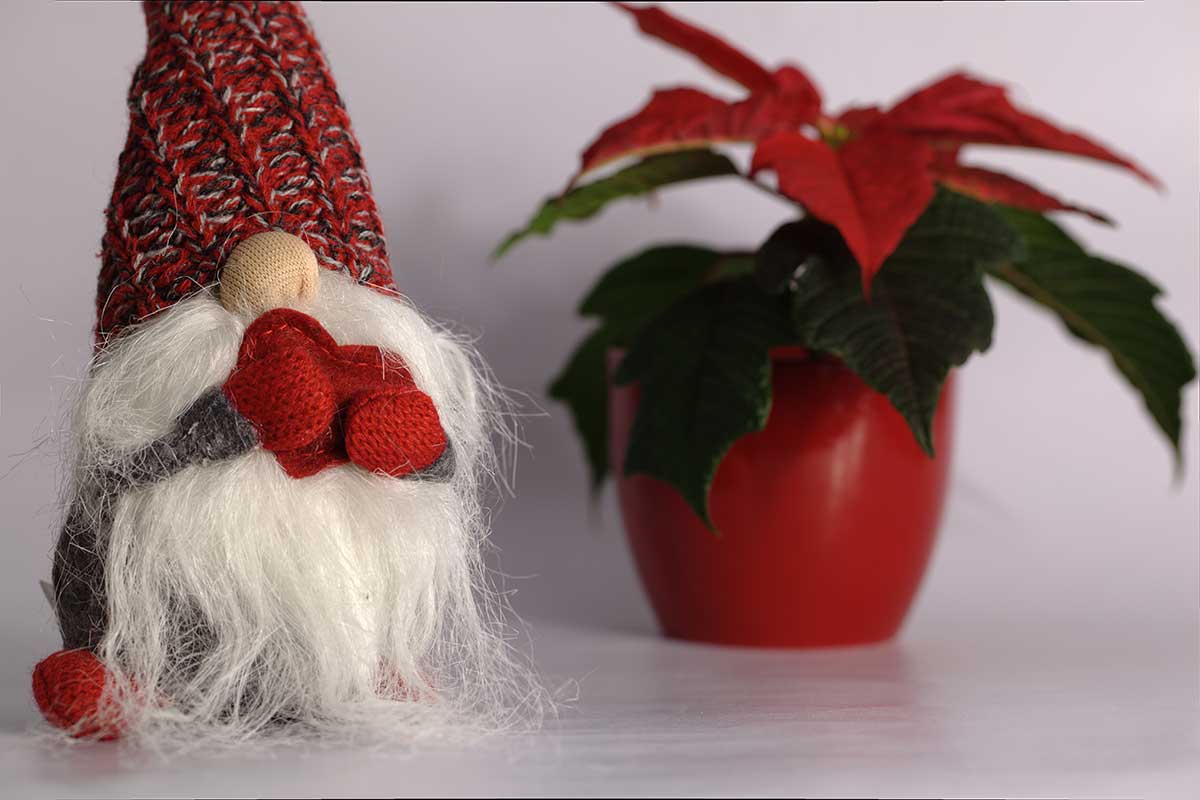
In Scandinavia, gifts are often brought on Christmas by small household elves with beards and pointed hats. In Sweden they are called Jultomten, in Denmark they are called Julnissen, in Norway they are called Julenissen, and in Finland they are called Joulutonttuja. For most of the year, the Christmas elf hide in dark corners around the house until Christmas Eve, when he comes out to hide presents around the house for children to find. Sometimes he chooses to punish or reward the members of the household without reason, so the family often leaves gifts of food, and sometimes even alcohol or tobacco, around the the house to appease him. Sometimes a family member will dress as the elves on Christmas and knock on the door with a sack of presents to distribute.
Slovakia and Czech Republic
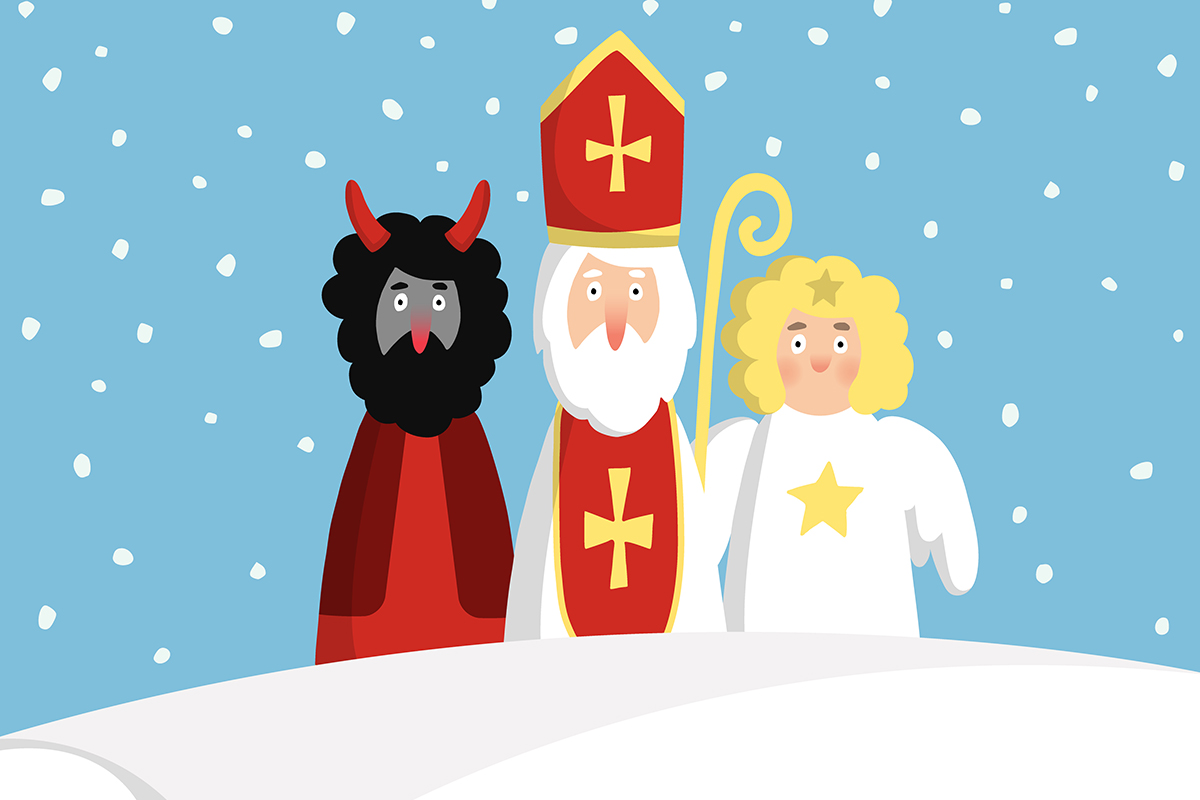
In Slovakia and the Czech Republic Saint Nicholas brings gifts to the children on Saint Nicholas Day each year. He comes to Earth from Heaven by sliding down a golden rope. He is joined by an angel and a devil called a cert who help to reward the good children and punish the bad children. The cert scares the children who have been bad throughout the year by reminding them what will be in store for them in Hell if they continue their naughty ways.




